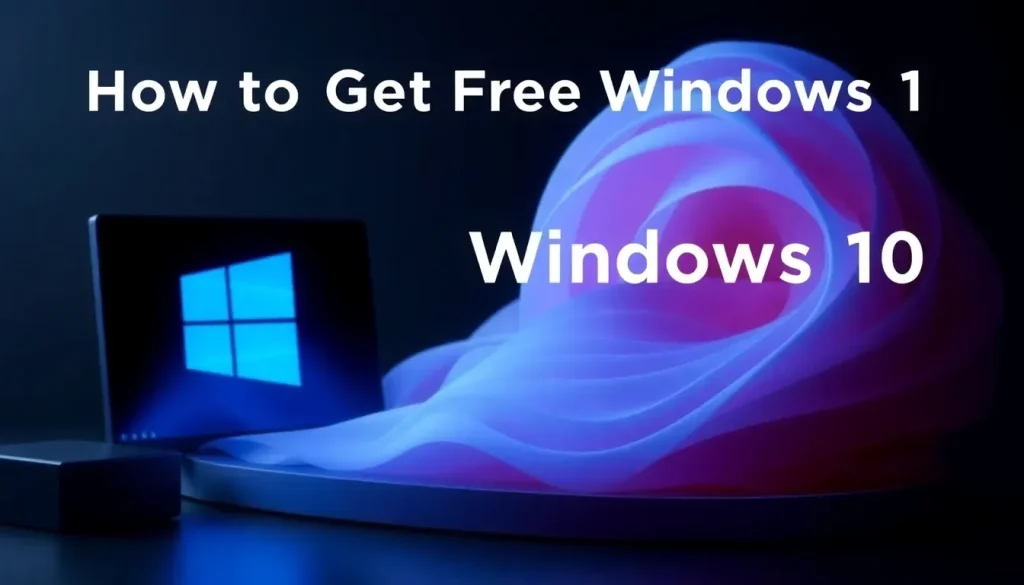How to Get Free Windows 10 Updates in Europe Requirements

Windows 10 continues to be a considerable player in the operating system market, even as the tech landscape shifts towards newer versions like Windows 11. For users in Europe, an announcement from Microsoft has provided a valuable opportunity: a year of free security updates. However, there's a catch, and understanding it is crucial for maintaining your device's security.
As the tech world moves forward, keeping your system updated is paramount. Microsoft has implemented a requirement that may affect many users. Let's delve into the details of this new policy and what it means for you.
- Microsoft's new requirement for receiving free Windows 10 updates in Europe
- Understanding the Extended Security Updates (ESU) program
- Implications for users outside the European Economic Area
- The importance of regular updates for Windows 10 users
- How to manage your Microsoft account for security updates
Microsoft's new requirement for receiving free Windows 10 updates in Europe
Microsoft has recently confirmed that users in the European Economic Area (EEA) can obtain free security updates for Windows 10 until October 14, 2026. However, to take advantage of this offer, you must sign in with a Microsoft account on your PC. This requirement may seem minor to those already using Microsoft accounts, but it presents a significant adjustment for users who prefer local accounts.
According to Windows Central, the stipulation is that users must log in with their Microsoft account at least once every 60 days. Failure to do so will result in the suspension of the Extended Security Updates (ESU) program for your system.
This is a critical detail. If you don't use your Microsoft account to log in for a period stretching to 60 days, you will need to re-enroll in the program to continue receiving updates. Microsoft has made it clear: “If you do not use your Microsoft account to sign in for a period of up to 60 days, ESU updates will be suspended and you will need to re-enroll by signing in with the same account,” as stated on their support website.
Understanding the Extended Security Updates (ESU) program
The ESU program is designed to ensure that users who still rely on Windows 10 can maintain a level of security even after the end of official support. Here’s what you need to know about the program:
- Eligibility: Users in the EEA can access these updates for free, unlike users in other regions.
- Duration: The free updates will be available until October 14, 2026.
- Account Requirement: You must log in with a Microsoft account to remain eligible.
- Frequency of Logins: You need to log in at least once every 60 days.
- Cost for Others: Outside of Europe, users will need to pay $30 for the same updates.
While the requirement to use a Microsoft account may pose an inconvenience for some, it is a small price to pay for the peace of mind that comes with regular security updates. For those who have already transitioned to a Microsoft account, this change will likely go unnoticed.
Implications for users outside the European Economic Area
For users located outside the EEA, the situation looks different. In many countries, individuals must pay $30 to access the same security updates that are offered for free in Europe. This fee allows users to activate updates across up to ten devices linked to the same Microsoft account. Here are some additional points to consider:
- Users will need to manage their subscriptions actively to ensure continued support.
- Organizations may have different pricing tiers and renewal options, which can lead to higher costs over time.
- Without payment, users will not receive critical security fixes that could leave their systems vulnerable.
As Microsoft aims to streamline its services and encourage users to utilize its account system, the disparity in access to free updates raises questions about equity in user experience across different regions.
The importance of regular updates for Windows 10 users
Staying updated is more critical now than ever. Regular updates not only enhance system performance but also provide essential security patches to protect against vulnerabilities. The extension of support until 2026 offers users a temporary reprieve, but it also serves as a reminder of the importance of transitioning to newer operating systems as they become available.
Some of the reasons to prioritize security updates include:
- Protection against malware: Updates often contain patches for vulnerabilities that could be exploited by malicious software.
- Performance enhancements: Many updates improve system efficiency, making your computer run smoother.
- New features: While primarily focused on security, updates can also introduce useful new functionalities.
How to manage your Microsoft account for security updates
For those not accustomed to using a Microsoft account, transitioning can feel daunting. Here are some tips for managing your account effectively:
- Create your Microsoft account: If you don’t have one, the process is straightforward. Visit the official Microsoft website, follow the prompts, and set up your account.
- Link your devices: Ensure all your Windows 10 devices are connected to the same Microsoft account to facilitate updates across multiple systems.
- Set reminders: Use calendar tools to remind yourself to log in at least once every 60 days to avoid interruptions in updates.
By following these steps, you can ensure that your system remains secure and updated without unnecessary hassle. The transition to a Microsoft account may take some adjustment, but the benefits of enhanced security and support make it worthwhile.
For further insights on Windows 10 and its support journey, consider watching the informative video titled "Windows 10 Isn't Dying: 1 Extra Year of Patches… FREE or …” available on YouTube:
In conclusion, while the requirement to use a Microsoft account may seem like an inconvenience, the opportunity to receive free updates until 2026 is beneficial for users. By adjusting to these changes and remaining proactive about security, Windows 10 users can ensure their systems stay protected in an ever-evolving digital landscape.




Leave a Reply